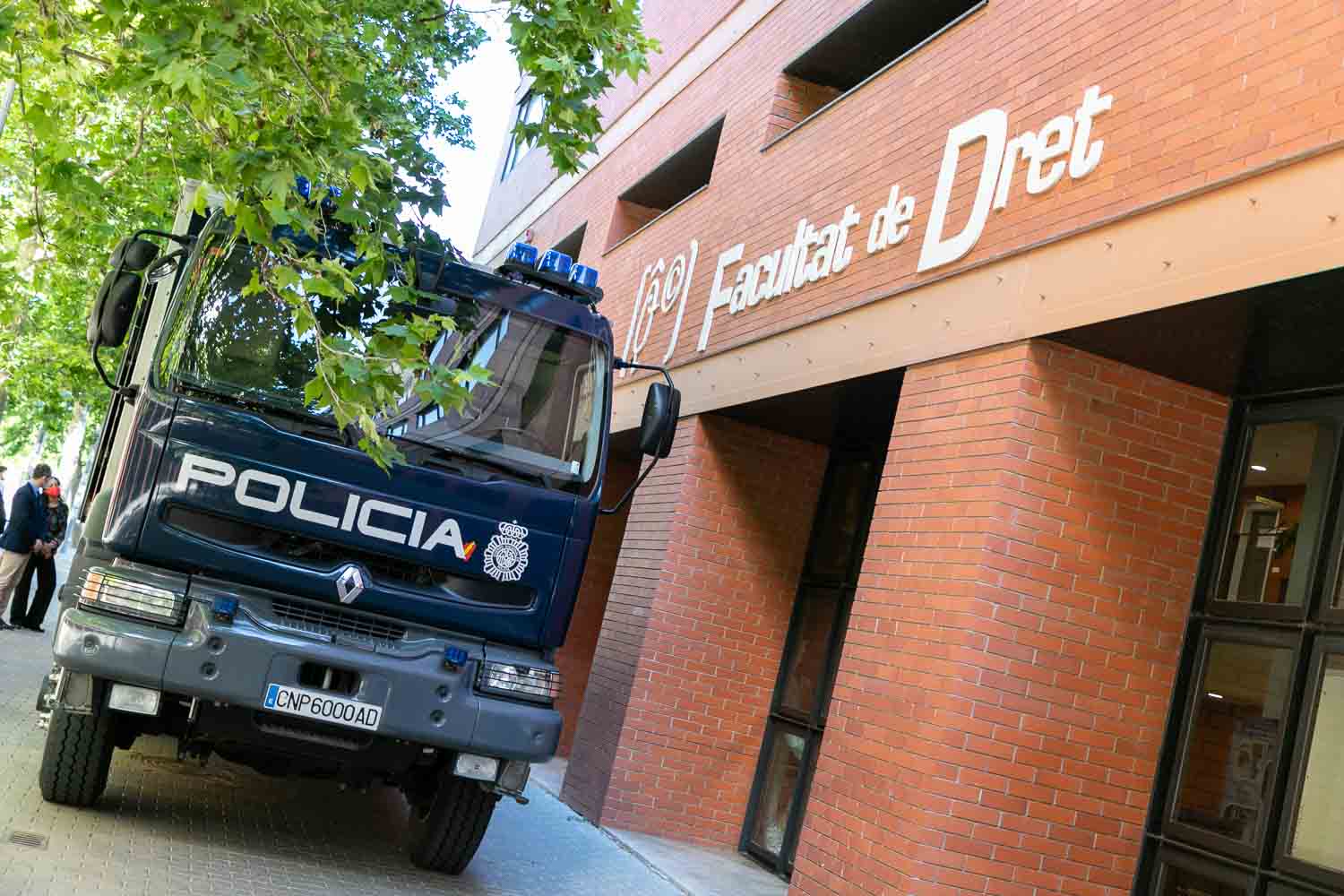The Faculty of Law will have a Forensic Science Laboratory (Lab Crim) next academic year.
- Office of the Principal
- May 11th, 2021
From the next academic year, criminology students at the University will have a Criminology Laboratory (LabCrim) where to do practical work and other training activities, as well as research and knowledge transference. The presentation took place during the inauguration of an exhibition on forensic techniques and methods at the Faculty of Law.
Presentation of the University’s Forensic Science Laboratory (LabCrim)
The Faculty of Law of the University of Valencia (UV) will start next academic year with a Forensic Science Laboratory.
The lab will support the practical activities of the UV degree of Criminology, as well as other training activities in this field.
Moreover, LabCrim will carry out research and knowledge tranfer activities, with analysis services and issuing reports on criminal, civil, commercial, labour and contentious-administrative legal matters, both for public and justice administrations and for the State security forces and other related organizations.
The LabCrim space structuring project was presented this morning by the Vice-Dean of the Faculty of Law, Javier Guardiola, during the inauguration of the exhibitions ‘Tècniques i mètodes de Policía Científica: passat, present I futur.’ (Techniques and Methods of Forensic Science: past, present and future).
Javier Palao, Dean of the Faculty of Law, stressed the practical dimension of university studies, placing special emphasis on the importance of this training aimed at the application of the acquired knowledge in the field of Criminology studies.
Maria Vicenta Meste, Principal of the University, highlighted the importance of having high-level facilities at our University in order to carry out the main university missions: teaching and training, research, knowledge transfer and scientific dissemination.
Inauguration of the exhibition ‘Techniques and methods of scientific police: past, present and future'.
The exhibition is organised by the UV Faculty of Law, the Forensic Police General Station and the Higher Headquarters of the Valencian Community. It is an itinerant exhibition of the forensic police that brings to the university community to an historical tour of the methods used by the forensic police.
The inauguration was attended by, among others: Maria Vicenta Mestre, UV Principal; Javier Palao, Dean of the Faculty of Law; María Elena Olmos, the UV General Secretary; Javier Guardiola, Vice-Dean of the Faculty of Criminology; José Piris Perpén, Provincial Chief of Police and Alfredo Garrido, Regional Chief of Operations.
Javier Guardiola, Vice-Dean of the Faculty of Criminology, presented the UV LabCrim project before touring the exhibition.
Content of the exhibition.
The exhibition consists of materials and devices, crime scene reconstruction, multimedia equipment and the advice of specialists in the field. All these elements come together to provide an awareness of how the forensic science police have come to what it is now.
Even so, some of the methods and techniques used by the police today are shown, as well as a preview of the scenarios of the most immediate future in this field
The exhibition gives an account of the origins and development of the application of scientific methodology to police work and incorporates equipment and materials that provide a historical overview of the development of scientific methodology in police work.
Development of forensic science
The development of forensic science runs parallel to the evolution of science, but also to legal safeguards and criminological knowledge. Diving into the origins of this discipline helps to understand its importance and how have we arrived at its current development.
Past, present and future of the discipline.
But this exhibition does not stop at past history. It also takes a look at current and future techniques, the means and devices used at present and those being researched and developed for use in the near future.
An awesome imaginary
The elements on display are part of everything we have seen so many times in crime films or series, so that during the visit we have the sensation of being immersed in a film. But beyond our cinematic imagination, what we are shown is the true present of the scientific police and how the alliance between technology and professional work allows us to use knowledge in the reconstruction, analysis and resolution of criminal acts.
In short, this is a training and professional development opportunity that the entire university community will undoubtedly benefit from.
File in: Inauguracions , Facultat de Dret , Presentacions

















